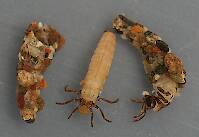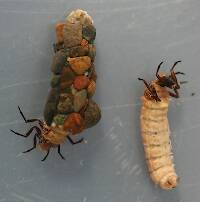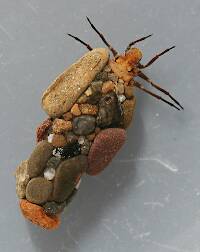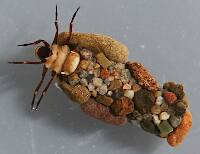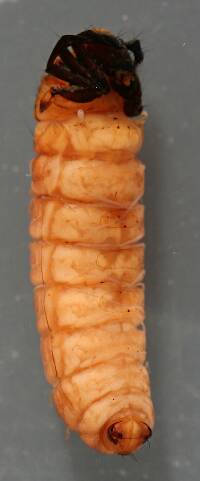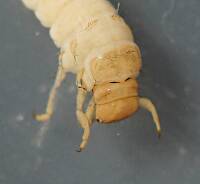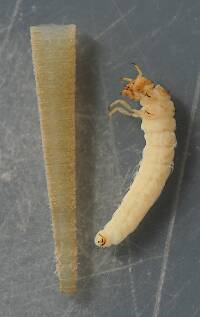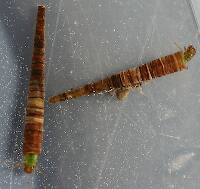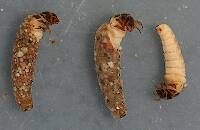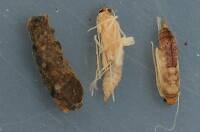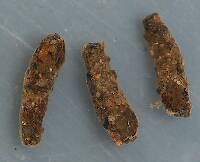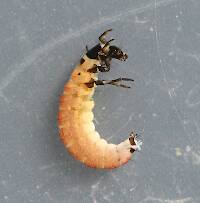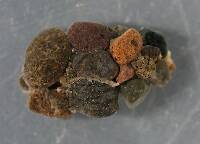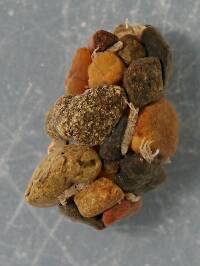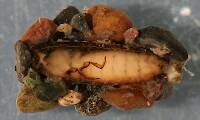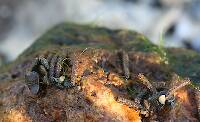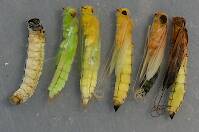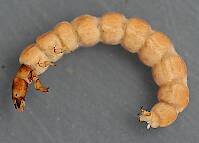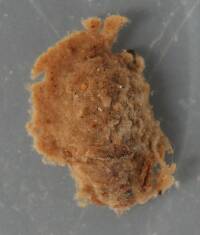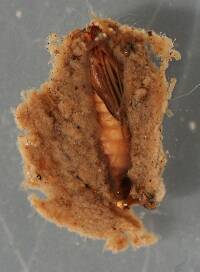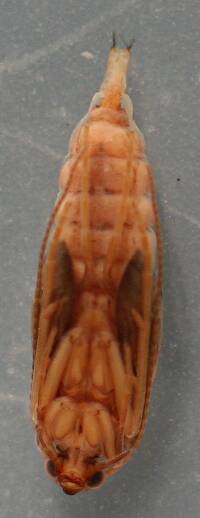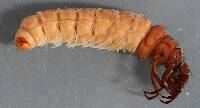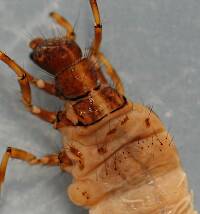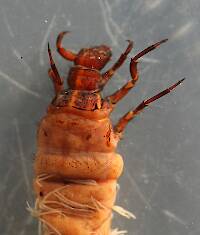
Hex Mayflies
Hexagenia limbata
The famous nocturnal Hex hatch of the Midwest (and a few other lucky locations) stirs to the surface mythically large brown trout that only touch streamers for the rest of the year.
Featured on the forum

This specimen keys pretty easily to Onocosmoecus, and it closely resembles a specimen from Alaska which caddis expert Dave Ruiter recognized as this genus. As with that specimen, the only species in the genus documented in this area is Onocosmoecus unicolor, but Dave suggested for that specimen that there might be multiple not-yet-distinguished species under the unicolor umbrella and it would be best to stick with the genus-level ID. I'm doing the same for this one.

Troutnut is a project started in 2003 by salmonid ecologist Jason "Troutnut" Neuswanger to help anglers and
fly tyers unabashedly embrace the entomological side of the sport. Learn more about Troutnut or
support the project for an enhanced experience here.
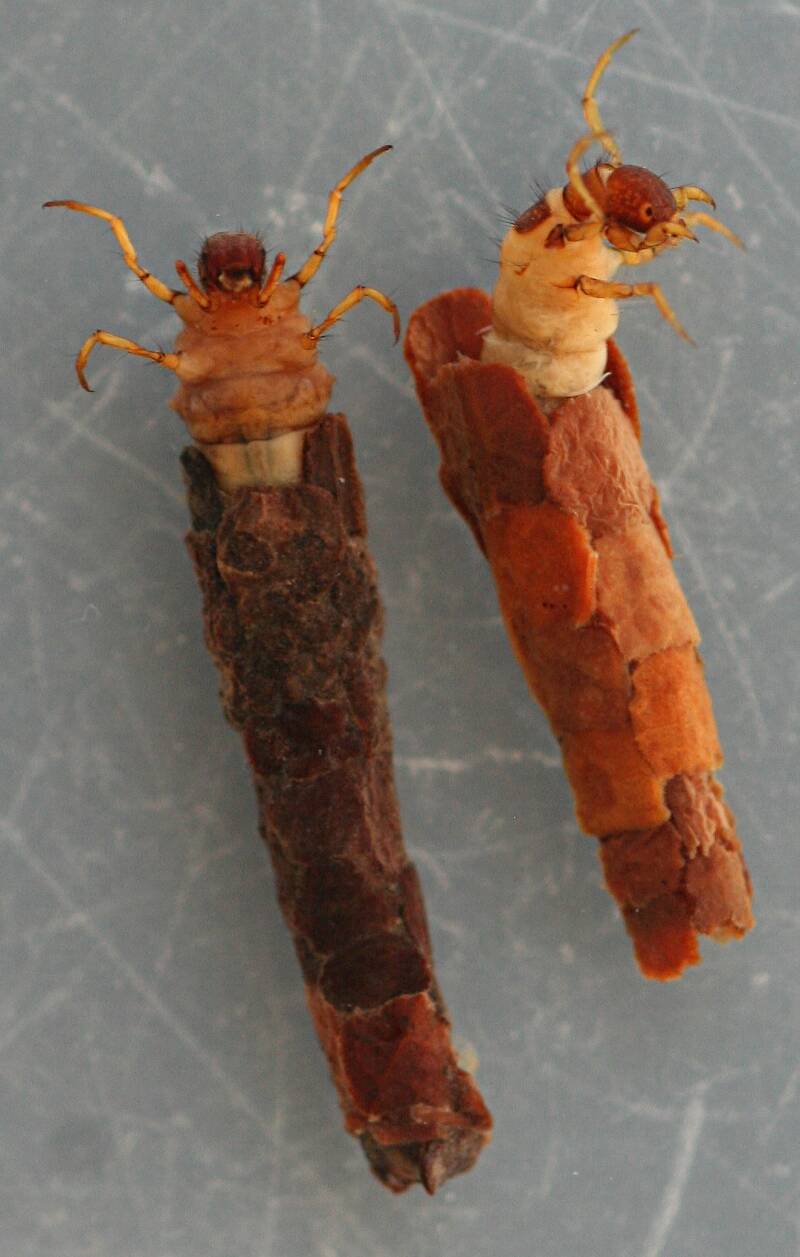
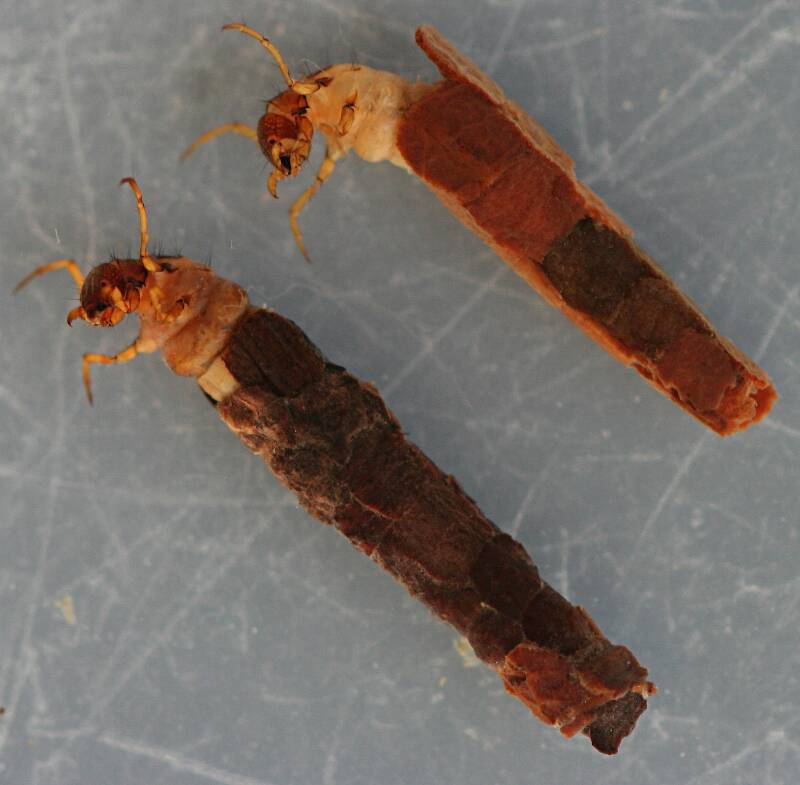
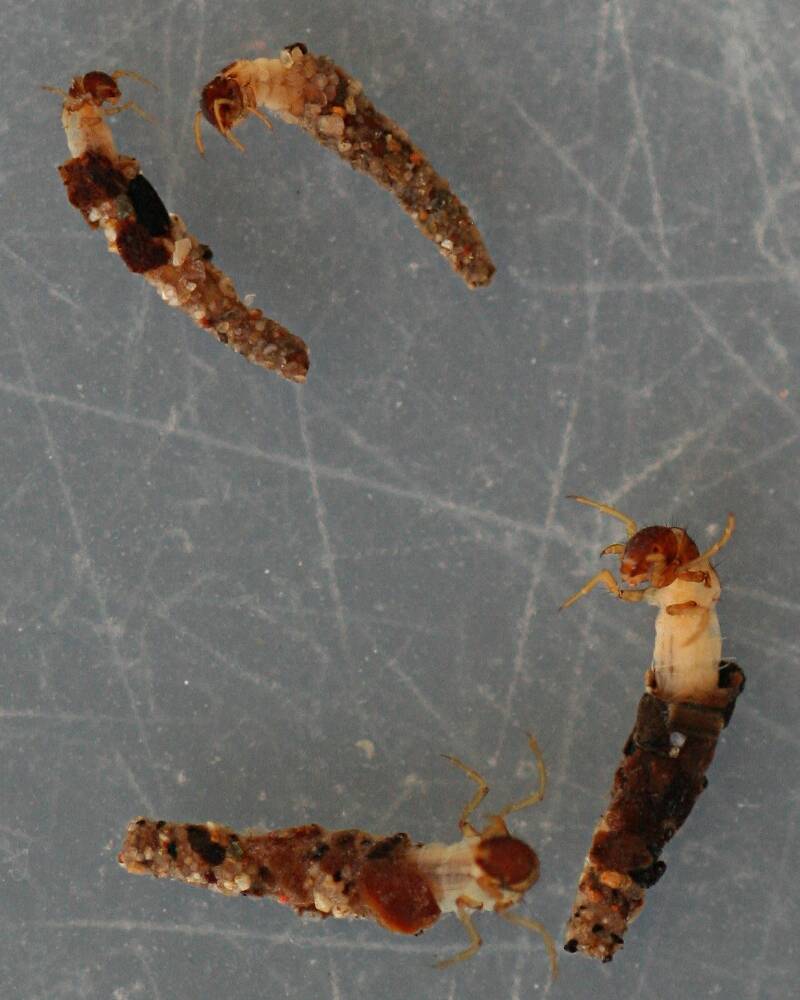
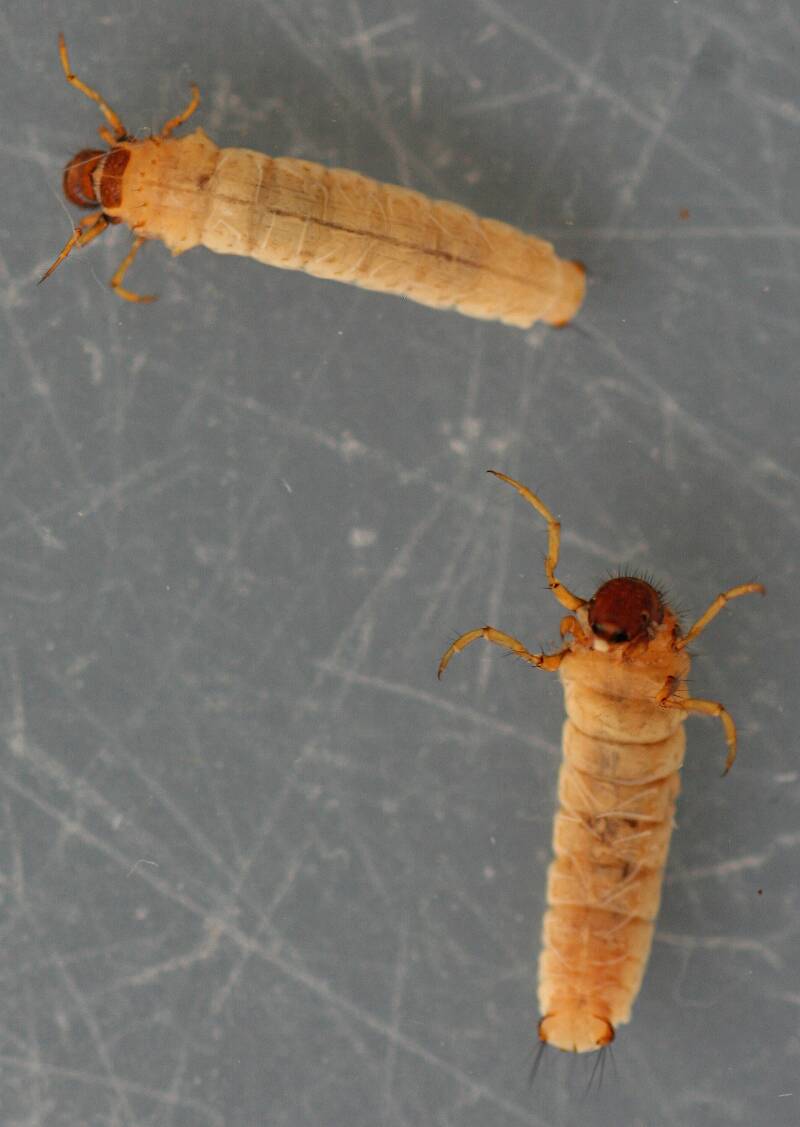
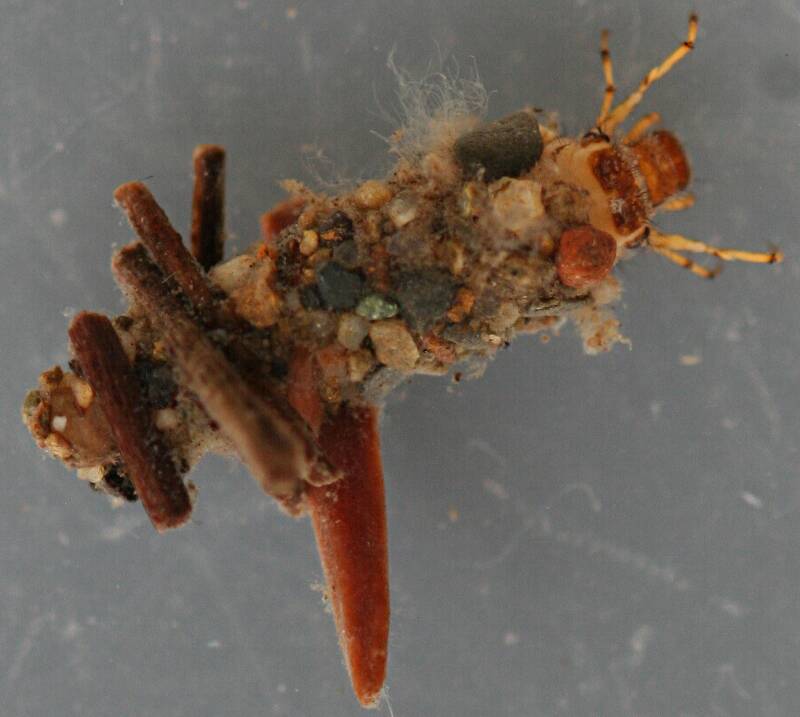
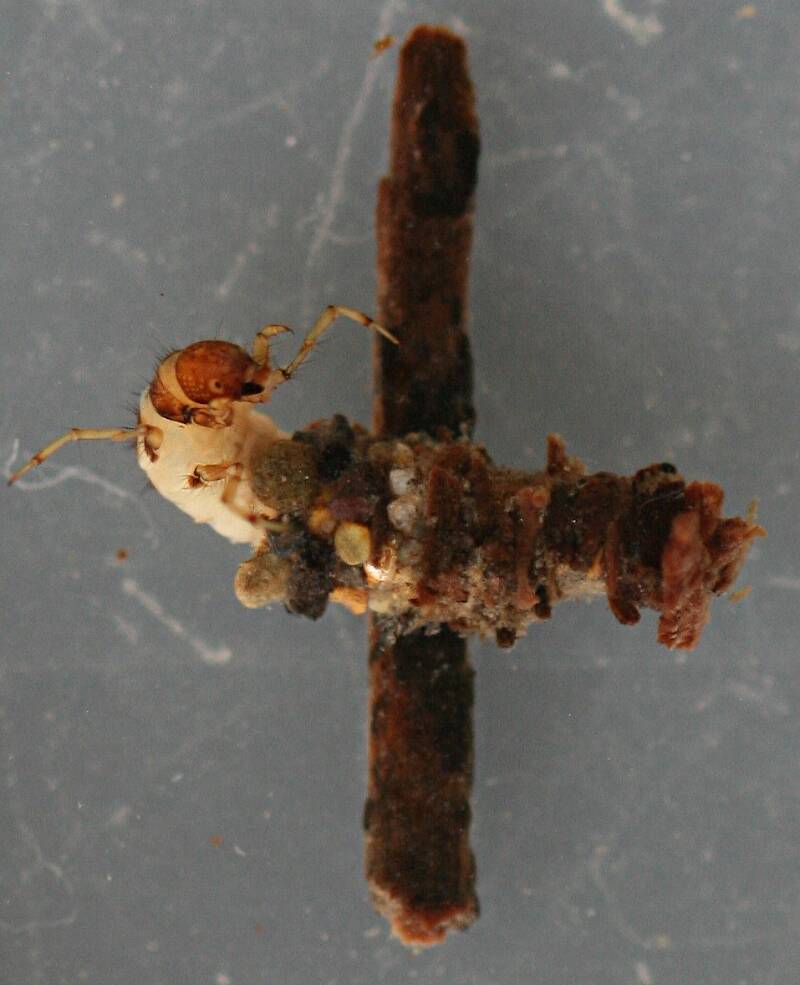
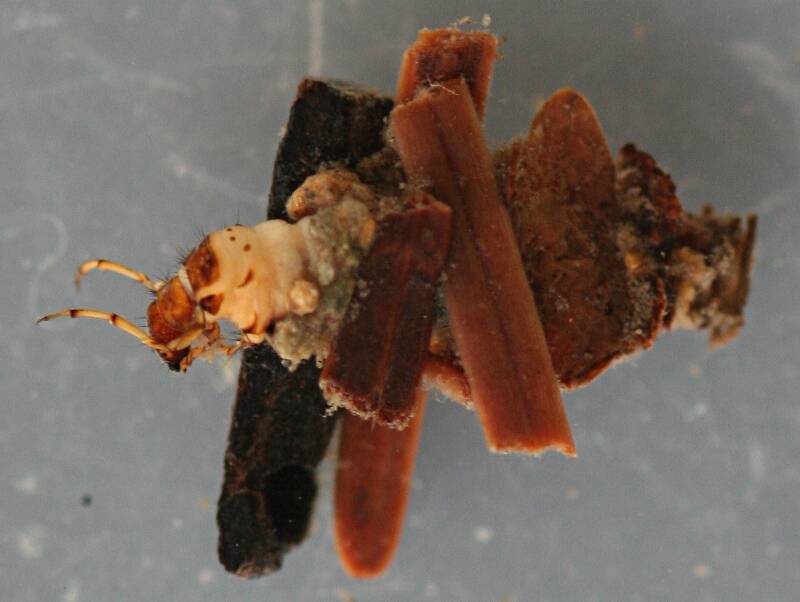
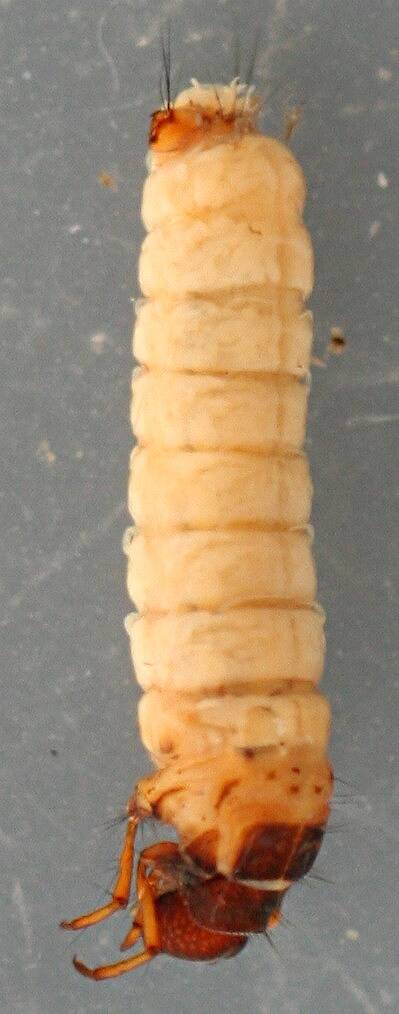
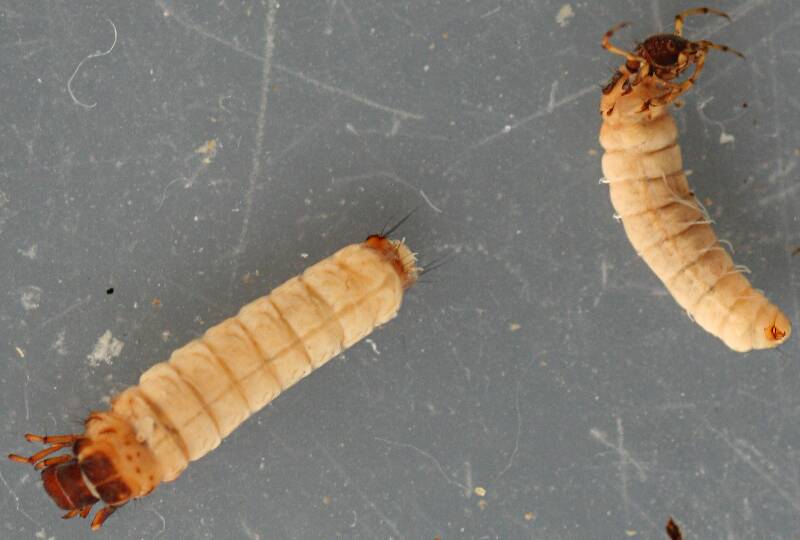
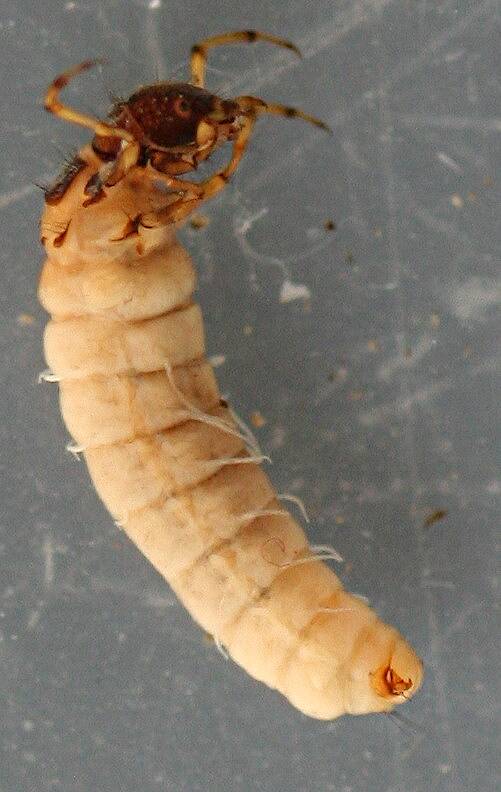
Millcreek on Apr 19, 2015April 19th, 2015, 9:54 am EDT
These two species are found in Mill Creek (tributary to the Russia River, near Healdsburg, CA). There are both a panel case and a turret case. Panel case is the first one shown. These insects are found in leafpacks for the panel case and grazing diatoms for the turret case.
"If we knew what it was we were doing, it would not be called research, would it?"
-Albert Einstein
-Albert Einstein
Oldredbarn on Apr 19, 2015April 19th, 2015, 10:07 am EDT
Mark. Great pictures as always...I'm beginning to think that there may be a book hiding in here somewhere and we are all getting a preview. :)
Spence
Spence
"Even when my best efforts fail it's a satisfying challenge, and that, after all, is the essence of fly fishing." -Chauncy Lively
"Envy not the man who lives beside the river, but the man the river flows through." Joseph T Heywood
"Envy not the man who lives beside the river, but the man the river flows through." Joseph T Heywood
Millcreek on Apr 19, 2015April 19th, 2015, 10:23 am EDT
Spence - No book right now. I'm too damn lazy to write it.:)
"If we knew what it was we were doing, it would not be called research, would it?"
-Albert Einstein
-Albert Einstein
Oldredbarn on Apr 19, 2015April 19th, 2015, 10:39 am EDT
Spence - No book right now. I'm too damn lazy to write it.:)
Write it or not brother, we here are enjoying it in serial form! :)
Spence
"Even when my best efforts fail it's a satisfying challenge, and that, after all, is the essence of fly fishing." -Chauncy Lively
"Envy not the man who lives beside the river, but the man the river flows through." Joseph T Heywood
"Envy not the man who lives beside the river, but the man the river flows through." Joseph T Heywood
MiltRPowell
Posts: 106
Posts: 106
MiltRPowell on Apr 19, 2015April 19th, 2015, 11:25 am EDT
Spence, you are on point there, great stuff....MillCreek I have always wanted ta comment that your posts are great stuff. But I lazy, Even that I live in east coast & alot of your stuff is west coast, it is interesting & done well. Thanks for taking the time to share, on that note I wouldn't call that lazy... For you do go & show the extra mile in your works. Thanks again, M.R.P.
flyfishingthecreekM.R.P.
Creno on Apr 19, 2015April 19th, 2015, 2:05 pm EDT
Millcreek - I like the cases going from turret to rocks and rocks to panels. These are great examples of the variability in case style with populations and between instars. Do you see any setal or other color differences (beside the legs) between the two species? Are you collecting the same locality on Mill Creek all the time or are there major altitudinal/vegetational differences in these collections?
Millcreek on Apr 19, 2015April 19th, 2015, 2:35 pm EDT
Creno - These were collected in the same area of Mill Creek (the same 100 yards). They are separated in time though, with the turret cases coming first in July and grazing on diatoms, and with the panel cases showing up around September and grazing on leaves. I haven't noticed any setal differences between the two although there may be some.
MiltRPowell - Thanks very much for the kind words.
MiltRPowell - Thanks very much for the kind words.
"If we knew what it was we were doing, it would not be called research, would it?"
-Albert Einstein
-Albert Einstein
Quick Reply
Related Discussions
Topic
Replies
Last Reply
3
Jun 11, 2009
by Odamark
by Odamark



